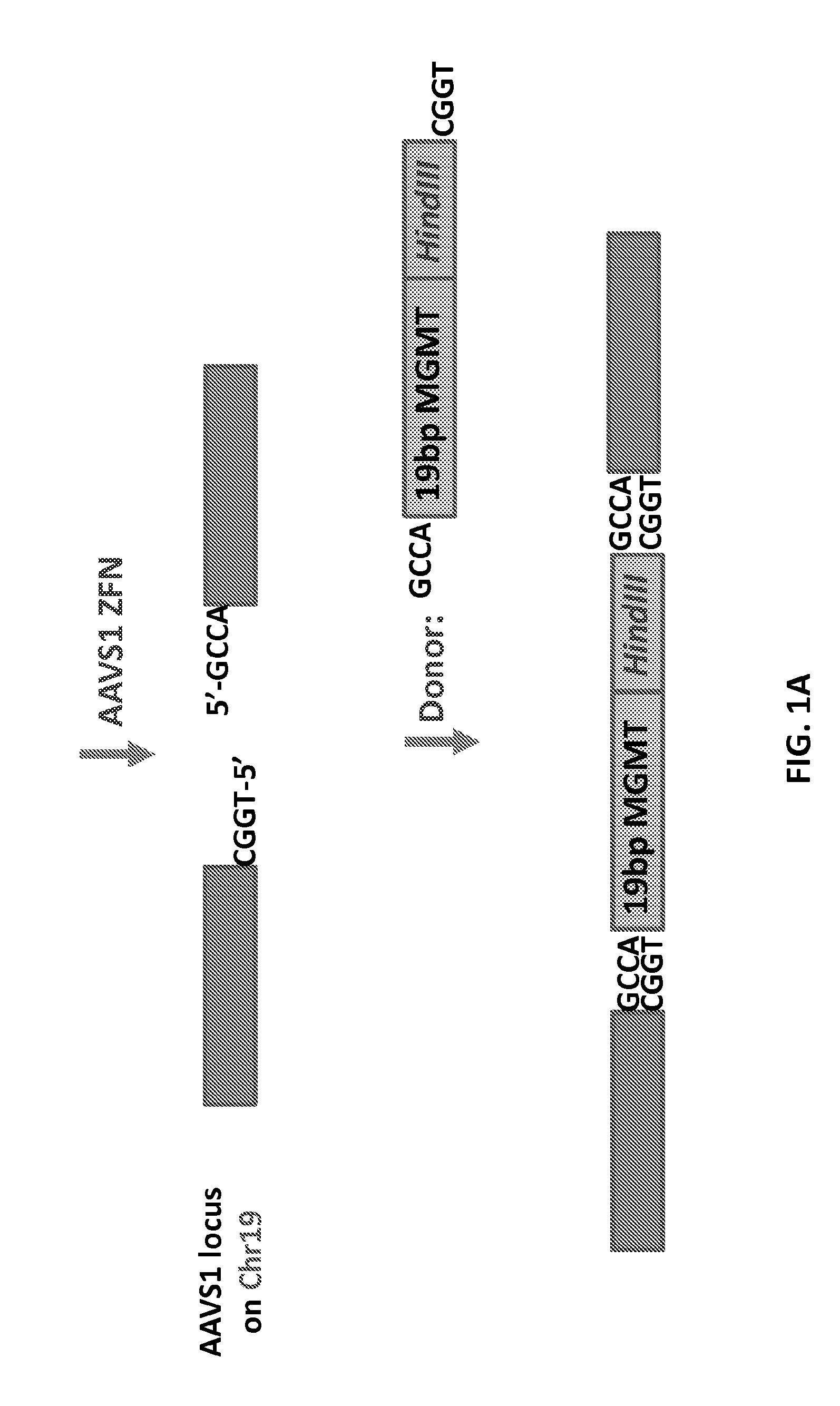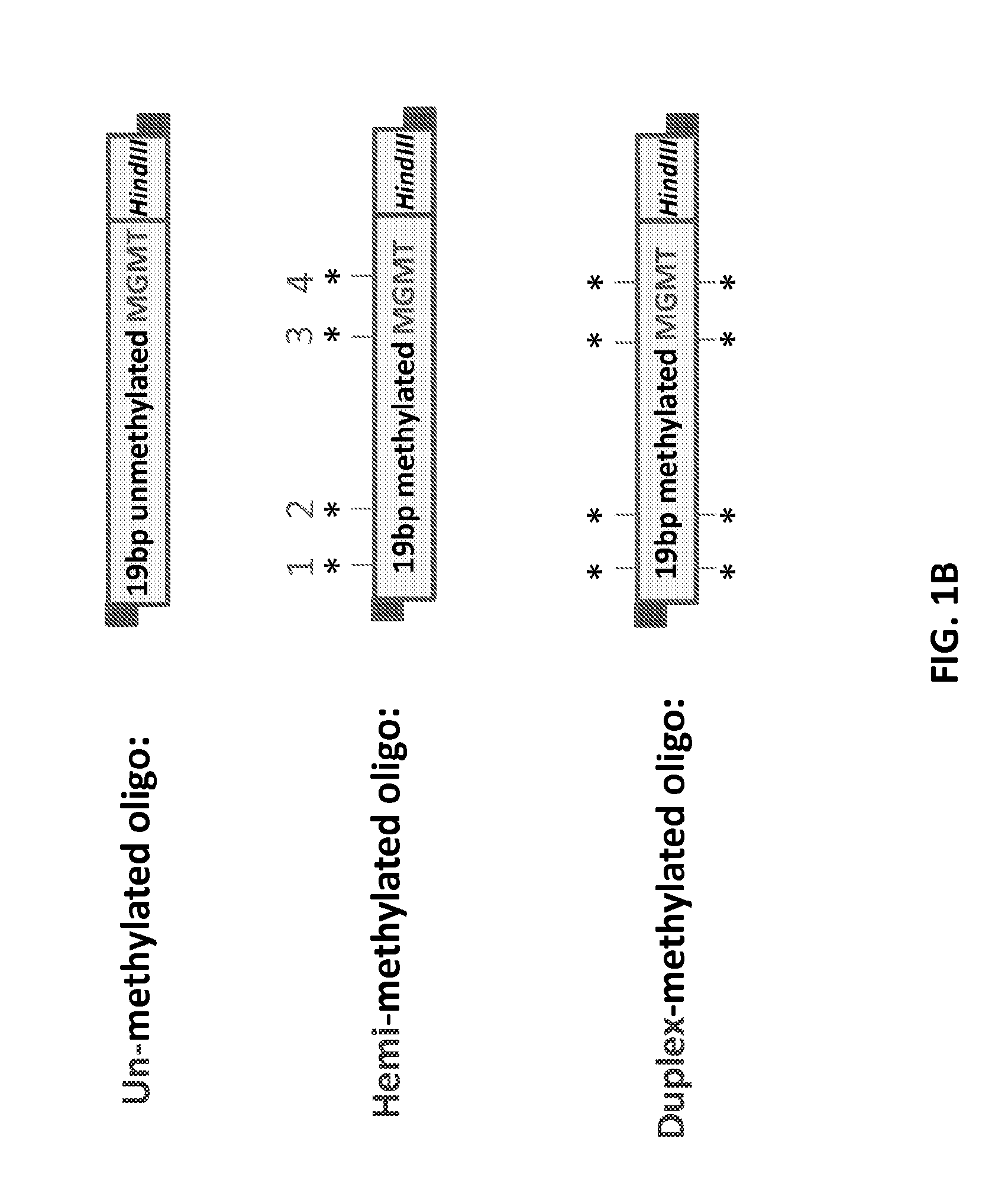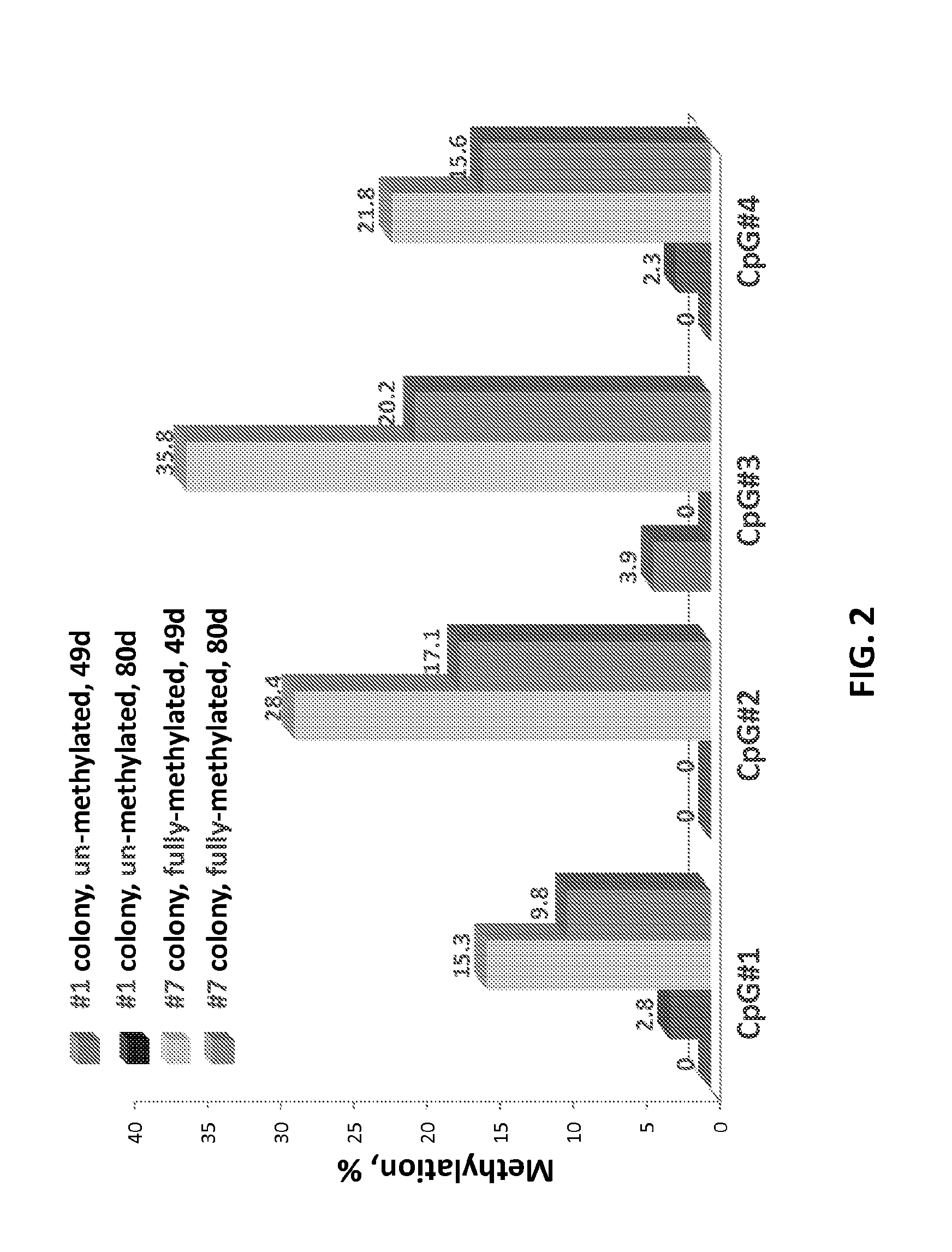Epigenetic modification of mammalian genomes using targeted endonucleases
a technology of endonuclease and genomic sequence, applied in the field of epigenetic modification of genomic sequence, can solve the problem of lack of cellular reference standards available for assessing epigenetic alteration status
- Summary
- Abstract
- Description
- Claims
- Application Information
AI Technical Summary
Benefits of technology
Problems solved by technology
Method used
Image
Examples
example 1
Stable Integration of Synthetically Methylated DNA
[0144]The purpose of this study was to determine whether synthetically methylated DNA can be stably integrated into the chromosomes of a cell using ZFN targeted genome modification. A fragment of human O6-methylguanine-DNA methyltransferase (MGMT) gene having different methylation patterns was inserted into a targeted site of the AAVS1 locus on chromosome 19 of human cells. FIG. 1A diagrams the strategy.
[0145]Two single-stranded oligodeoxynucleotides (ssODNs) comprising a 19 nt sequence from the human MGMT gene (i.e., 5′-CGACGCCCGCAGGRCCTGC-3′, SEQ ID NO:9) and a HindIII restriction endonuclease site (5′-AAGCTT-3′) for colony screening were synthesized. The CpG sites, designated 1 to 4 (from 5′ to 3′), are underlined in SEQ ID NO:9. One ssODN contained 5-methylcytosine in the CpG sites. Two complementary (methylated and unmethylated) ssODNs were also synthesized. Various combinations of the ssODNs were annealed at a final concentrati...
example 2
Stable Maintenance of Synthetically Methylated DNA
[0148]The purpose of this study was to determine whether the methylation status of synthetically methylated DNA integrated into a genome can be stably maintained. Nine cell colonies with correct insertion of the MGMT fragment in each of the three alleles of the AAVS1 locus (see Example 1) were regrown for two weeks. The methylation status of each colony was determined by pryosequencing (EpigenDx, Hopkinton, Mass.). The methylation analysis is at 49 day post nucelofection is shown in Table. 1.
TABLE 1Methylation Analysis at 49 days after nucleofection.ID MethylationMethylation percentage (%)Overall Region#StatusCpG#1CpG#2CpG#3CpG#4MeanSD1Non-0.00.03.90.01.01.92Non-2.74.67.83.84.72.23Non-0.03.88.53.33.93.54Hemi-0.02.98.02.53.43.45Hemi-0.00.07.12.82.53.46Hemi-3.26.617.74.78.06.67Duplex-15.328.435.821.825.38.88Duplex-0.02.69.25.14.23.99Duplex-4.03.111.43.35.54.0
[0149]Duplicates (A, B) of colony #1 (non-methylated) and colony #7 (duplex-me...
example 3
Uses of Cells Having Stable MGMT Methylation Patterns
[0150]Cells having stable MGMT methylation patterns (such as those prepared above) can be used as diagnostic controls in assays for determining an appropriate course of treatment for patients suffering from glioblastoma. The level of MGMT promoter methylation in patient tumor samples can be analyzed and compared to that of the control (reference) cells with the stable MGMT. For example, DNA can be extracted from tumor and control samples using standard procedures. The extracted DNA can be treated with bisulfite, amplified using methylation-specific PCR, and sequenced. Alternatively, the methylation status of the extracted DNA can be determined using pyrosequencing. Alternatively, the methylation status of the MGMT promoter can be analyzed by immunohistochemistry in fixed cells using a methylation specific antibody raised against MGMT. The methylation status of patient samples then can be compared to that of the control cells. If t...
PUM
| Property | Measurement | Unit |
|---|---|---|
| volume | aaaaa | aaaaa |
| volume | aaaaa | aaaaa |
| nucleic acid | aaaaa | aaaaa |
Abstract
Description
Claims
Application Information
 Login to View More
Login to View More - R&D
- Intellectual Property
- Life Sciences
- Materials
- Tech Scout
- Unparalleled Data Quality
- Higher Quality Content
- 60% Fewer Hallucinations
Browse by: Latest US Patents, China's latest patents, Technical Efficacy Thesaurus, Application Domain, Technology Topic, Popular Technical Reports.
© 2025 PatSnap. All rights reserved.Legal|Privacy policy|Modern Slavery Act Transparency Statement|Sitemap|About US| Contact US: help@patsnap.com



